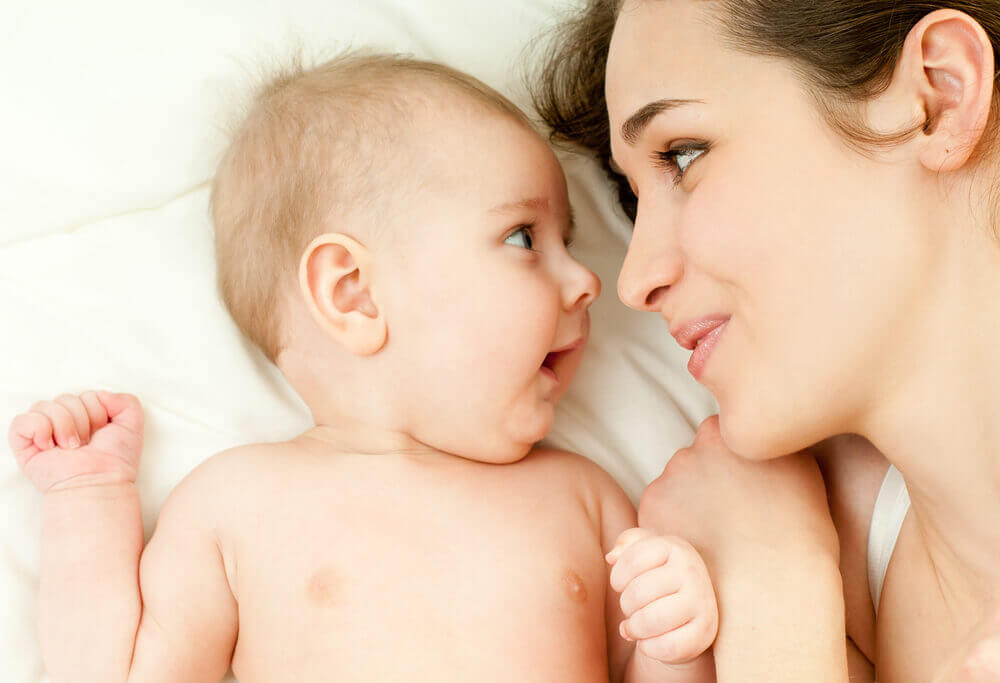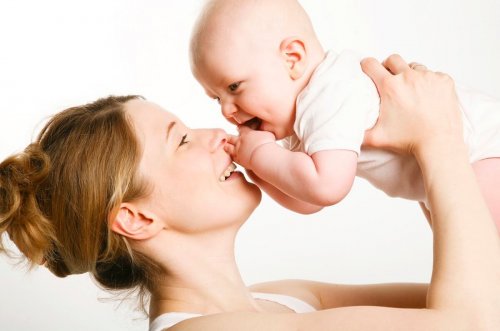Separation from Attachment Figures

A child’s future depends, to a large extent, on the early relationships he forms with his parents and attachment figures.
If a child is showered in love and affection and bonded with his parents since birth, appropriate development is guaranteed.
The child will become a self-confident person, with good relationships and possibilities for success.
Attachment refers to a child’s bond with a primary caregiver, usually the mother, who sees to his biological needs. It manifests itself in smiles, tears, contact and communication, among other actions.
Emotional bonding and stability
A secure attachment relationship guarantees a child’s emotional stability during development. The consequences of a negative attachment relationship could result in insecurity, depression and anxiety disorders.
The mother’s personality and life experiences influence how she treats her child. In turn, the child’s temperament also conditions the parent’s behavior.
Independent and safe mothers build good attachments. But indecisive ones, who live in the memory of their experiences, will have a more difficult time.
Positive emotional bonds favor learning. From 10 to 18 months, children start to explore the world. Knowing they have someone who protects them during this stage gives them a feeling of security.
Although the bond begins to take hold at 2 months of age, it’s strongest at the age of 2 years. At that time, separation from attachment figures will cause harm.
This separation (for example, to go to work or daycare) generates pain and anxiety. If the child understands that his parents will return, he’ll begin learning.
Thus, the child begins to bond with secondary attachment figures, such as teachers, and becomes more autonomous. He’ll want to discover the new environment that surrounds him.

Phases of attachment
There are four phases of attachment:
- From birth to 2 months, when the child accepts anyone who offers comfort.
- From 2 to 7 months, the child doesn’t protest if the parents leave.
- From 7 to 30 months, he feels pain and anguish in front of strangers.
- In phase four, after 30 months, he isn’t saddened by the departure of the caregiver.
Once built, attachment can be safe. It’s based on the affection of the parents, who respond to the needs of the child, who grows confident in himself.
Attachment is a bond with a primary caregiver, usually the mother, who oversees any biological need.
Fear and insecurity
In insecure attachment, there are deficiencies in care. On the one hand, there is avoidance attachment, in which the child trusts himself but not others.
In ambivalent attachment, however, the child has a negative idea of himself and a positive idea of others.
When separation from attachment figures occurs before the age of 6 months, the consequences are not as severe. The child can get used to short and frequent distances.
From 6 months to 2 years, prolonged separation from attachment figures will trigger problems.
A loss of the attachment figure can severely affect the child’s personality. Adoption or long hospitalizations can cause long-term effects.

Effects of separation from attachment figures
In the short term, this loss generates stress, agitation and depression.
In the long term, if the child doesn’t establish new attachment patterns, there may be intellectual retardation and problems in social relationships.
Separation anxiety with attachment figures affects adults more than children, with 7% of adults affected versus 4% of children. This is a fear of being away from their figures of protection and affection.
It’s very common between the ages of 1 and 6 years, and is expressed via tears and tantrums.
When that fear or anxiety is maintained over time or when it affects the adult, then there is a problem. It manifests itself as constant fears of being alone or of leaving the house. The death of the attachment figure distresses them and they suffer nightmares.
They also experience headache, stomach pain, nausea and vomiting. If the symptoms exceed four weeks in children and adolescents, or six weeks in adults, it’s advisable to ask for psychological help.
Relationships with children aren’t built on material things. Listening to them, talking about their concerns and providing quality time is vital to building a strong relationship.
This will prevent separation from attachment figures from becoming an insurmountable trauma.
A child’s future depends, to a large extent, on the early relationships he forms with his parents and attachment figures.
If a child is showered in love and affection and bonded with his parents since birth, appropriate development is guaranteed.
The child will become a self-confident person, with good relationships and possibilities for success.
Attachment refers to a child’s bond with a primary caregiver, usually the mother, who sees to his biological needs. It manifests itself in smiles, tears, contact and communication, among other actions.
Emotional bonding and stability
A secure attachment relationship guarantees a child’s emotional stability during development. The consequences of a negative attachment relationship could result in insecurity, depression and anxiety disorders.
The mother’s personality and life experiences influence how she treats her child. In turn, the child’s temperament also conditions the parent’s behavior.
Independent and safe mothers build good attachments. But indecisive ones, who live in the memory of their experiences, will have a more difficult time.
Positive emotional bonds favor learning. From 10 to 18 months, children start to explore the world. Knowing they have someone who protects them during this stage gives them a feeling of security.
Although the bond begins to take hold at 2 months of age, it’s strongest at the age of 2 years. At that time, separation from attachment figures will cause harm.
This separation (for example, to go to work or daycare) generates pain and anxiety. If the child understands that his parents will return, he’ll begin learning.
Thus, the child begins to bond with secondary attachment figures, such as teachers, and becomes more autonomous. He’ll want to discover the new environment that surrounds him.

Phases of attachment
There are four phases of attachment:
- From birth to 2 months, when the child accepts anyone who offers comfort.
- From 2 to 7 months, the child doesn’t protest if the parents leave.
- From 7 to 30 months, he feels pain and anguish in front of strangers.
- In phase four, after 30 months, he isn’t saddened by the departure of the caregiver.
Once built, attachment can be safe. It’s based on the affection of the parents, who respond to the needs of the child, who grows confident in himself.
Attachment is a bond with a primary caregiver, usually the mother, who oversees any biological need.
Fear and insecurity
In insecure attachment, there are deficiencies in care. On the one hand, there is avoidance attachment, in which the child trusts himself but not others.
In ambivalent attachment, however, the child has a negative idea of himself and a positive idea of others.
When separation from attachment figures occurs before the age of 6 months, the consequences are not as severe. The child can get used to short and frequent distances.
From 6 months to 2 years, prolonged separation from attachment figures will trigger problems.
A loss of the attachment figure can severely affect the child’s personality. Adoption or long hospitalizations can cause long-term effects.

Effects of separation from attachment figures
In the short term, this loss generates stress, agitation and depression.
In the long term, if the child doesn’t establish new attachment patterns, there may be intellectual retardation and problems in social relationships.
Separation anxiety with attachment figures affects adults more than children, with 7% of adults affected versus 4% of children. This is a fear of being away from their figures of protection and affection.
It’s very common between the ages of 1 and 6 years, and is expressed via tears and tantrums.
When that fear or anxiety is maintained over time or when it affects the adult, then there is a problem. It manifests itself as constant fears of being alone or of leaving the house. The death of the attachment figure distresses them and they suffer nightmares.
They also experience headache, stomach pain, nausea and vomiting. If the symptoms exceed four weeks in children and adolescents, or six weeks in adults, it’s advisable to ask for psychological help.
Relationships with children aren’t built on material things. Listening to them, talking about their concerns and providing quality time is vital to building a strong relationship.
This will prevent separation from attachment figures from becoming an insurmountable trauma.
All cited sources were thoroughly reviewed by our team to ensure their quality, reliability, currency, and validity. The bibliography of this article was considered reliable and of academic or scientific accuracy.
- Bowlby, J. (1986). Vínculos afectivos: formación, desarrollo y pérdida. Madrid: Morata.
- Bowlby, J. (1995). Teoría del apego. Lebovici, Weil-HalpernF.
- Garrido-Rojas, L. (2006). Apego, emoción y regulación emocional. Implicaciones para la salud. Revista latinoamericana de psicología, 38(3), 493-507. https://www.redalyc.org/pdf/805/80538304.pdf
- Marrone, M., Diamond, N., Juri, L., & Bleichmar, H. (2001). La teoría del apego: un enfoque actual. Madrid: Psimática.
- Moneta, M. (2003). El Apego. Aspectos clínicos y psicobiológicos de la díada madre-hijo. Santiago: Cuatro Vientos.
This text is provided for informational purposes only and does not replace consultation with a professional. If in doubt, consult your specialist.








